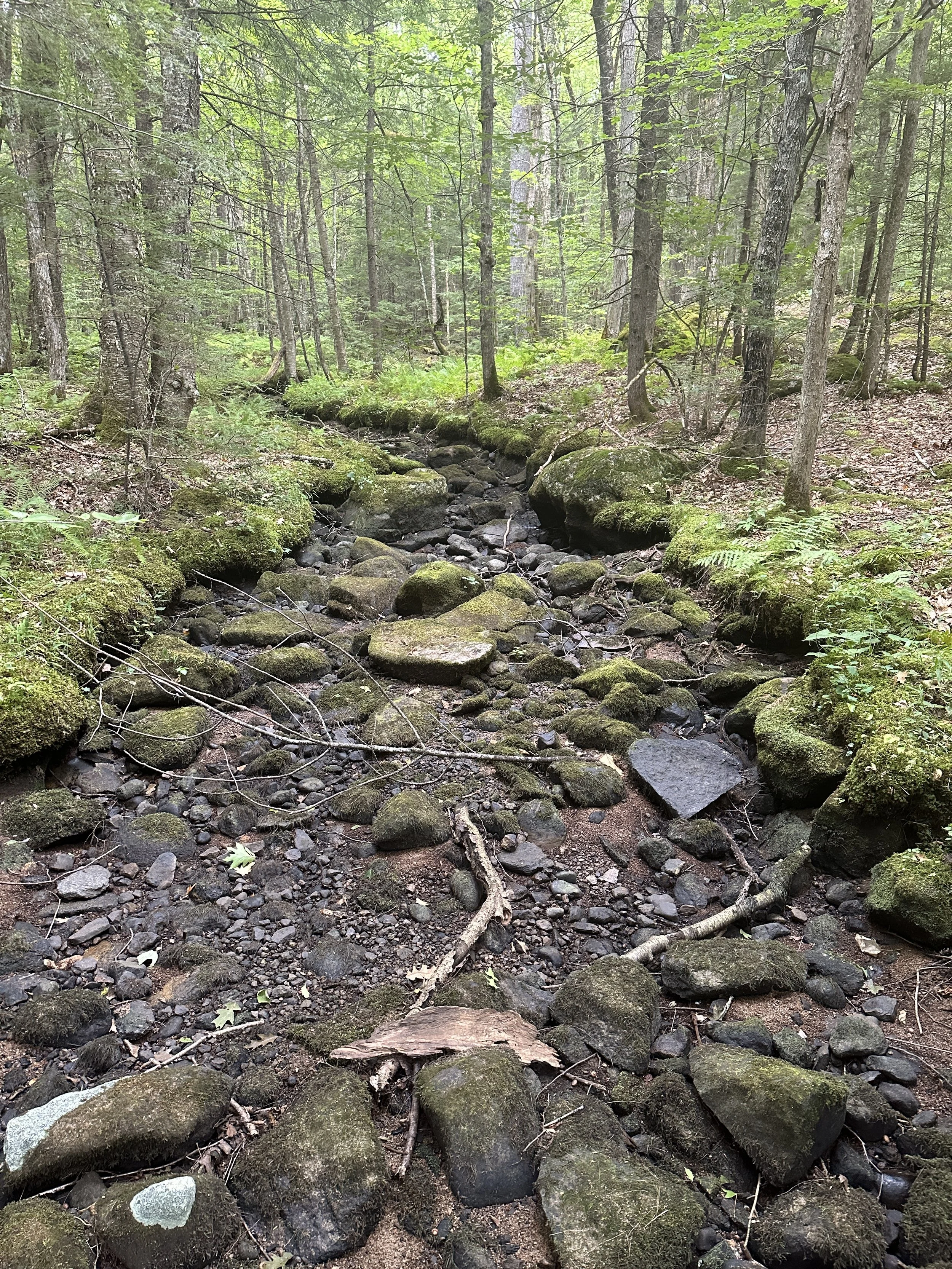Effects of Drought on Biotic Stream Communities
It goes without saying that aquatic animals need water to live. There are few options when ideal aquatic habitats, such as the streams in the Squam Lake watershed, are faced with extreme drought. 2025 marks the driest summer in New Hampshire’s history. With minimal rain since late June, water levels in Squam Lake and the surrounding inlets have only decreased. Spending a lot of my summer studying these streams, I had the same question as most folks–where do the bugs and fish go when there’s no water? I dove into some research to try and understand what could be happening to the aquatic life in our streams, and the effects drought might have on biotic diversity in years to come.
Drought can have a strong effect on the biological and chemical compositions of stream ecosystems. Shorter drought periods can lead to an easier rebound of macroinvertebrates, while droughts lasting many months are likely to have long-term effects on the diversity of bugs.
First, flowing stream habitats become isolated into individual pools, eliminating new
oxygen sources and trapping wildlife into stagnant water. Even small changes in oxygen availability can locally eradicate entire species of macroinvertebrates, especially ones that are sensitive and intolerant to pollution. Rain does more than keep stream channels to a flowing and reasonable level. It also acts as a diluting agent in the existing water. Soils in the ground are filled with nutrients and ions, which can build up from a variety of sources. When these ions from the ground seep into the sparse amounts of water present, it can lead to extremely salty conditions, making it difficult for sensitive macroinvertebrates to filter with their gills. Rainwater helps keep the ions flowing downstream, ultimately creating a cleaner water source for fish and macroinvertebrates.
The lack of flowing water leads the wildlife populations crowding into tighter spaces, increasing the competition for the already-limited resources. Species that are most likely to repopulate quickly after a drought share similar resilient traits, such as desiccation tolerance, sclerotized (hard-plated) bodies, and short life cycles. Additionally, these species don’t have leg parts to keep them stable in the water channel, meaning they are likely to drift downstream once the flow is reestablished. Tolerant species, such as midges, craneflies, blackflies, and even some beetles lack certain morphological adaptations that allow them to stay in one place. Contrarily, intolerant species such as some mayflies and stoneflies are considered “clingers,” and have many adaptations that allow them to cling to rocks in high water flow. Some adaptations include curved claws, gills on their stomach that act as suction cups, and an overall flat appearance so water can glide right over them. One study conducted in the Southeastern United States found that the tolerant species recorded during drought conditions were eventually replaced by soft-bodied, larger “clingers,” leading scientists to believe that the stream conditions were once again stable.
The presence of clingers can indicate good water quality because these species have gone through many generations of adaptations to live in cold, flowing water. Clingers can stick to rocks and have fragile gills that can only tolerate clean, oxygenated water. The streams flowing into Squam Lake are still dry in mid-October, and only time will tell when they will once again be filled with water. Future monitoring of water chemistry and macroinvertebrate collections in the Squam Lake inlets are needed to understand the full effects of the 2025 drought.
Understanding and acknowledging the effects of drought as an Americorps member can help me to better engage and educate community members. In the lakes region of New Hampshire, we have all seen and felt the effects of the drought. From extremely low lake levels to a statewide burn ban, I have shifted the realms of my service to teach community members about our environment during this crucial time.
Sydney Paradise is an AmeriCorps member serving as a Water Resource Assistant at the SLA. She has grown a fondness for stream restoration and aquatic benthic macroinvertebrates; both which play a role in her future to combat stream deterioration. Learn more about Syd here.


